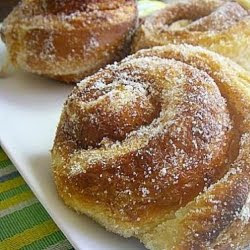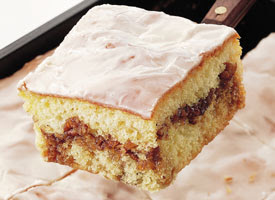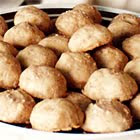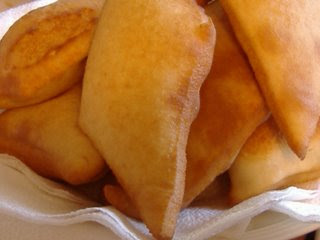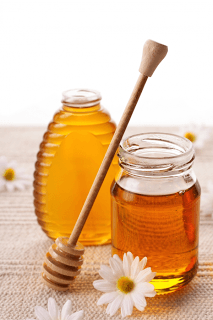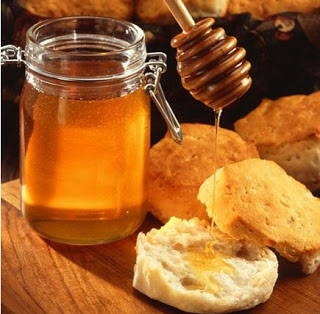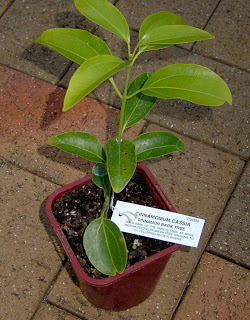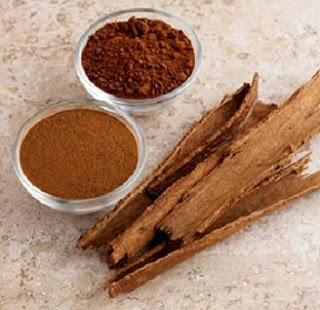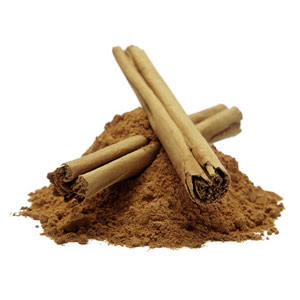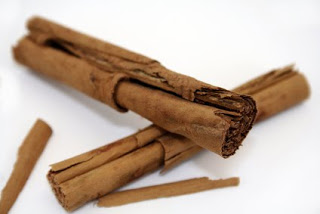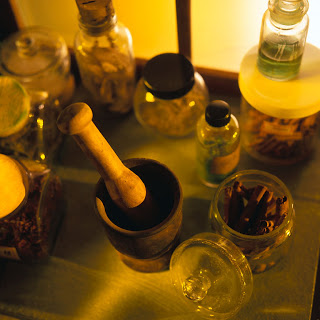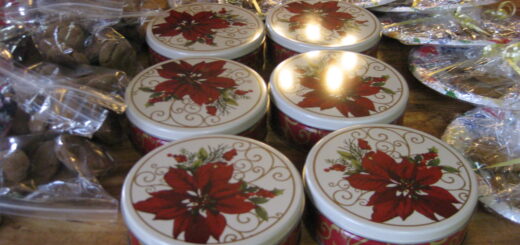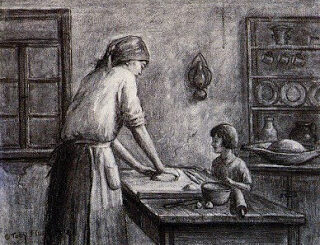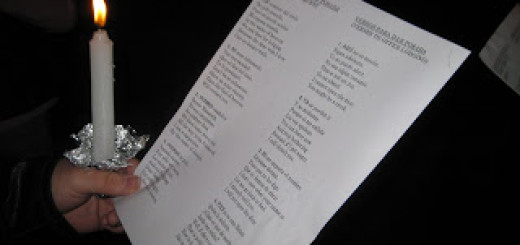HONEY AND CINNAMON THOUGHTS
Recipes are followed by information, benefits of, and links to information on honey and cinnamon.
RECIPES WITH HONEY OR CINNAMON
========================================
BAKLAVA

1- (1 lb.) package thawed phyllo dough
1 lb. melted butter (you might need more)
Syrup
3 cups water
3 cups granulated sugar
Juice of lemon
1/2 cup corn syrup or honey
Filling
Add to about 6 cups finely chopped walnuts:
1/2 cup sugar (or to taste)
1/8 tsp. grated nutmeg (or to taste)
1 – 2 T. cinnamon (or to taste)
In a heavy saucepan, heat sugar and water at a low boil for 10 minutes. Add lemon juice and corn syrup (this helps prevent the mixture from crystallizing). Remove from heat. Set aside.
Thoroughly butter a large, rectangular pan. Lay a sheet of phyllo pastry inside the pan. Let edges drape over pan. (Prevent the waiting leaves from drying out by covering with a towel.) Brush sheet with melted butter. Lay another phyllo sheet over the melted butter. Repeat this step for 10 more phyllo leaves, but each time you lay a new sheet down, alternate its position of the sheets in the pan, so the leaves left to drape over the pan’s edge are evenly distributed.
Repeat the phyllo, butter mixture for another 10 sheets or so over the folded edges, but this time, do not let the leaves drape. Instead, take a paring knife and cut any excess edges so each sheet fits exactly and neatly over the baklava. (Lay the skinny, trimmed pieces over the center place where the nuts are showing, brushing each layer with butter.)
Try to get the last few layers of phyllo leaves to be perfect rectangles fitted into the pan.
Before baking, score the baklava into long, 2-inch-wide strips, through the bottom of the pan, but DO NOT cut all the way to the pan’s edge, or the ends will curl.
Then cut diagonally through each strip, making little diamonds. (Again, no cutting through from side to side.)
Bake in a 350-degree oven for 1 hour, or until very golden brown.
Immediately pour the cooled syrup mixture over the hot baklava.
Let sit for at least 4 hours before cutting. Do not cover with plastic wrap or refrigerate.
¾ Cup milk
¼ Cup butter
2 eggs, beaten
3 cups flour
1 teaspoon baking powder
1 teaspoon salt
oil for frying
cinnamon sugar
In sauce pan melt butter in milk and cool. Stir in beaten eggs. In separate bowl, stir together flour, baking powder, and salt. Add milk mixture and mix well. Knead until smooth. Shape into 20 balls and let rest 5 minutes. Roll each into a 4-inch circle. Fry in deep hot fat until lightly browned, turning once. Sprinkle with cinnamon sugar.
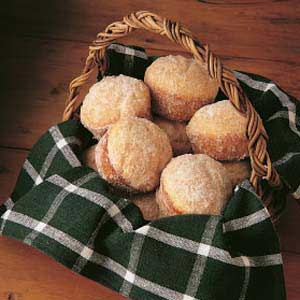
1/3 Cup shortening
½ Cup sugar
1 egg
1 ½ Cups flour
1 ½ teaspoons baking powder
½ teaspoon salt
¼ teaspoon ground nutmeg
½ cup milk
½ cup sugar
1 teaspoon ground cinnamon
½ cup butter, melted
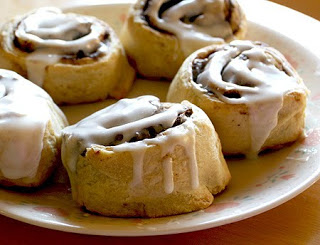
Heat: 1 C. milk, 1/3 C. butter, 1/3 C. sugar 1/2 tsp. salt, stirring constantly and just until butter melts. Mix 2 1/2 C. flour with 1 envelope of yeast (1 Tbl.) and pour warm milk over it. Add 3 eggs and beat with electric mixer for 30 seconds. Scrape bowl and beat on high for 3 minutes. Stir in another 2 1/2 cups flour by hand with spoon and turn dough into a greased bowl. Cover and let rise 1 hour until doubled. Punch down and roll out on floured surface into a 12 inch square. Brush with melted butter and sprinkle with 1 C. brown sugar, 1/4 C. flour, 1 tsp. cinnamon. Optional ingredients include: 1/2 C. nuts, 1/2 C. raisins, 1 C. chopped apples, dried fruits, and or cherry pie filling. Roll up jelly roll style. Slice approx 1-inch. Turn face up and arrange on cookie sheet. Cover with plastic wrap. Let rise again until double, about an hour. Bake at 350 for 30 minutes. Cool and drizzle with glaze. GLAZE: 1 Tbl. milk, 1 1/2 C. powdered sugar, 1 tsp. vanilla, additional milk to make drizzling consistency.
4 to 5 cups bread flour
¼ cup shortening
¼ cup dry milk
1 tablespoons sugar
¼ teaspoon salt
2¼ cups water
3 packs ( ¼ -ounce each) dry yeast
Roll-in butter:
4 sticks cold butter
1/8 cup bread flour sifted
Cinnamon/sugar
mix:
1 cup sugar
1 tablespoon cinnamon
Sift the bread flour and set aside. Dissolve yeast in warm water (110 to 115 degrees). Cream the shortening, dry milk, sugar and salt. Alternately add the yeast/water mix and bread flour to the creamed shortening. Add the extra -cup if flour seems really sticky. Let dough rest for 30 minutes in a bowl in the refrigerator. While dough rests, mix together the roll-in butter and flour until smooth. After dough has rested, roll out dough to a rectangle, about 16 inches by 12 inches on a floured surface. Roll out butter mixture to about ¼ -inch thickness on a floured surface. Pick it up and maneuver it on top of the dough. It should be smaller than 16 inches by 12 inches because you want to leave a 1-inch border around the dough. (The butter has to be cold enough to roll out, which can be tricky. You can add a little more flour to the butter or try putting it back into the refrigerator, but if you really can’t get the butter to roll out, use a spatula and spread it over the dough.) Do a tri-fold. Fold the dough on one short side over the middle, then the second short side over that. Roll out dough lengthwise to same size as before.
Fold again. Place dough on floured sheet pan, cover and let rest in refrigerator for 30 minutes. Repeat tri-fold method once more.
Roll out dough to rectangle once more. Brush melted butter (lightly) over entire rectangle.
Sprinkle cinnamon-sugar mixture over entire rectangle.
Roll dough tightly (like a jellyroll) or as you would for cinnamon rolls. Cut roll into -inch or 1-inch pieces, depending on size of roll desired. You will have a loose end on each piece; tuck loose end underneath each roll. Let rise on baking sheet until doubled in size, 45 minutes to 1 hour. Bake at 350 degrees for 15 to 20 minutes or until light brown. Prepare caramel and spread on top after baking. Prepare cream cheese icing and spread on top. (You may use the caramel topping only.)
Makes 12 huge or 24 large buns.
FOR CARAMEL TOPPING:
1 cup butter
1 cup brown sugar
¼ cup sugar
¾ cup honey
¼ cup heavy cream
Toasted pecans, optional
Combine butter, sugars and honey in a large pot. Bring to a boil.
Stir once or twice. Boil for 4 to 5 minutes (watch carefully to avoid scorching). Remove from heat and swirl in cream. Be very careful because hot mixture will splash up. Add pecans, if desired. Brush on hot rolls.
Brush with caramel sauce. Add the cream cheese.
FOR CREAM CHEESE ICING:
1 cup cream cheese
¼ cup butter, softened
2 to 3 tblspoons powdered sugar
Cream the cream cheese until soft. Add softened butter. Add powdered sugar to taste.
(from the kitchen of Launa Haslam – teacher at South Jordan Elementary)
We made these on Thanksgiving 2009 at Nicole & Mandy’s house. Mama came with us that year to Utah and had a glorious time. We did our traditional Thanksgiving hike and everyone enjoyed it. These rolls were absolutely wonderful! Can’t eat just one!
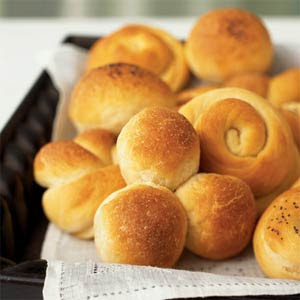
1 cup sugar
1 cup margarine
3 cups milk
1 cup hot water
4 eggs
11 cups flour
4 1/2 Tablespoons SAF instant yeast
(Told it HAS to be SAF and can be bought at Trader Joes in California or Macey’s Grocery Store in Utah, or online, but I just used regular yeast and they came out fine.)
4 teaspoons salt
warm, about 2 – 3 minutes. (Do not get too hot.) Using a mixer with
bread hooks, start mixing. Add eggs and half of the flour. Mix well.
Add yeast and salt, continue mixing. Add remaining flour. When mixed
in, turn to high speed and let knead for 11 minutes. Lead dough rise
in mixer for 5 to 10 minutes, until puffy. Turn out onto floured cloth
(or floured board) and divide into flour balls. Using a rolling pin,
roll first ball into a circle the size of a pizza. Using a pizza
cutter, cut circle into twelve wedges. To form a roll, take wedge of
dough, turn it over and flold in wide corners so they meet. Then roll
up like croissant. Place on 24 inch greased baking pan. Let rise about
15 minutes until puffy. Bake at 375 degrees for 12 – 15 minutes or
until dark golden brown. Rub top of hot rolls with squre of margarine.
SWEET ROLLS: The previous recipe is also good for sweet rolls. After
mixing, roll dough into a large rectangle. Spread dough with two
squares of softened butter or margarine and top it with either sugar
and cinnamon or brown sugar and cocount. Roll like a jelly roll. Cut
with string or dental floss about 1 inch thick. Place on greased pan
close to each other so they will rise tall and spread out flat. Bake
until dark golden brown. Let cool. Frost with cream cheese frosting.
(Beat: 8 oz cream, 1/2 cup butter, 2 lbs powdered sugar, 1 teaspoon
vanilla, drops of milk until it makes a fluffy consistancy.)
from the kitchen of Amelia Miles, who got it from Tina Drye
Cake batter:
4 eggs
½ cup sugar
yellow cake mix
¼ cup vegetable oil
1 cup sour cream
Topping:
1 cup brown sugar
1 ½ tsp cinnamon
½ cup chopped pecans
Icing:
1 cup powdered sugar
6 Tbl butter
4 Tbl milk
Beat cake batter ingredients together. Spread in 9 x 13 inch greased cake pan.
In bowl, mix the topping ingredients. Sprinkle over cake batter and then swirl
throughout. Bake at 325 for 1 hour. Bring icing ingredients to a boil and pour
over hot cake.
HONEY NUT CAKE IN SOAKING SYRUP

Epicurious | 1998
by Marcy Goldman
A Treasury of Jewish Holiday Baking
The Middle Eastern tone is part of this cake’s appeal. A very nutty cake is suffused with a honey-citrus soaking syrup, much like baklava in concept but flour-free, making it suitable for Passover. A little goes a long way. For large Seder crowds, you can double the recipe and bake it in a 9-inch springform pan or a 9 by 13-inch rectangular pan. I serve this cake cut into small squares or diamonds placed in small muffin liner cups. Copeland Marks, in his book Sephardic Cooking, attributes this to Turkish cuisine. Joan Nathan calls it “Tishpishiti” in her book, Jewish Cooking in America and points to Syrian, as well as Turkish roots as does Claudia Roden in her book, Mediterranean Cookery. A nutty classic indeed! My version is inspired by a recipe simply called “Nut Cake,” found in From My Grandmother’s Kitchen, by Viviane Alcheck Miner with Linda Krinn. If you are interested in Sephardic recipes along with a very engaging family history, this book is a real find.
Yield: Makes 10 to 12 servings
Cake
3/4 cup granulated sugar
1/4 cup brown sugar
1/4 cup vegetable oil
3 eggs
3 tablespoons orange juice
1 teaspoon finely minced orange zest
1/4 teaspoon salt
1/4 teaspoon ground cinnamon ( or 1/2 teaspoon for a more pronounced cinnamon flavor)
1/2 cup matzoh cake meal
1/2 cup finely chopped hazelnuts or almonds
1 cup finely chopped walnuts
Soaking Syrup
2/3 cup granulated sugar
1/4 cup honey
1/3 cup orange juice
1/4 cup water
1 tablespoon lemon juice
1/4 teaspoon ground cinnamon
Preheat the oven to 350°F. Generously grease a 7-inch round layer cake pan (if you do not have one, you can use a round foil pan of the same or similar size available in the supermarket baking aisle).
Cake:
In a medium-sized mixing bowl, using a wire whisk, beat the granulated and brown sugars with the oil and eggs until the mixture is thick and pale yellow. Stir in the remaining batter ingredients. Turn the batter into the prepared pan.
Bake for 35 to 40 minutes, or until the top is light brown and set. Cool for at least 20 minutes. Meanwhile, prepare the Soaking Syrup.
Soaking Syrup:
In a medium saucepan, combine the ingredients. Heat to dissolve the sugar and simmer for 5 to 10 minutes, until the mixture becomes syrupy. Cool well.
Pour the cooled syrup over the cooled cake, poking holes in the cake with a fork, to permit the syrup to penetrate. Allow it to stand for 2 to 4 hours to absorb the syrup. I prefer to refrigerate this cake so that while it is absorbing the liquid, it is also firming up. Also, chilling the cake offsets its sweetness and makes it easier to cut. Serve it on splayed muffin liners.
Source Information
Reprinted with permission from A Treasury of Jewish Holiday Baking by Marcy Goldman. © 2009 Whitecap Books, Ltd.
Read More http://www.epicurious.com/recipes/food/printerfriendly/Passover-Honey-Nut-Cake-in-Soaking-Syrup-109151#ixzz1KMCnhHOH
Polvorones De Canela (Mexican Cinnamon Cookies)
1 C. butter, softened
1/2 C. powdered sugar
2 1/2 C. sifted flour
1 tea. cinnamon
1 tea. vanilla extract
1/4 tea. salt
1/2 C. sugar or 3/4 C. powdered sugar
1/2 tea. cinnamon
In lrg. bowl with electric mixer at high speed, beat butter until light and fluffy. At low speed, beat in 1/2 c. powdered sugar, flour, cinnamon, vanilla extract or flavoring and salt just until combined. Dough will be stiff. Shape into a ball; wrap in wax paper. Refrigerate 30 min.
Preheat oven to 400 degrees F.
To make ball cookies, roll into 3/4-in. balls. To make flat cookies, roll into 1-in. balls and flatten with fingers to about 1/4 in. thickness. Place 1 1/2 in. apart on ungreased cookie sheets. Bake 10 min. or until golden brown.
Combine sugar and cinnamon. Roll hot cookies in mixture. Cool and sprinkle with remaining mixture.
Joanne Ross (from Better Homes & Gardens, Mar 1965)
When I organized a monthly cooking group in my home, Joanne came over and taught us how to make these, which are a Mexican tradition, and served with honey.
3 teaspoons baking powder
1/2 teaspoon salt
1 tablespoon shortening
1/2 cup lukewarm water
Cut in shortening with dry ingredients till shortening resembles corn meal. Gradually add water, stirring mixture with fork. (Dough will be crumbly.) Turn dough out on lightly floured surface; knead till smooth ball is formed. Divide in half; let stand for 10 minutes. Roll each half to 10×12 1/2 inch rectangle, about 1/16 inch in thickness. Cut in 2 1/2 inch squares. Fry 3 or 4 at a time in deep hot fat (400′) about 30 seconds on each side. Drain on paper toweling. Roll sopapillas in cinnamon and sugar mixture (2 teaspoons cinnamon to each 1/2 cup sugar). Makes about 40 sopapillas. (I like to tear off corner and pour in small amount of honey. My children loved to have these as a treat with hot chocolate on cold winter evenings.)
Paul IM, Beiler J, McMonagle A, Shaffer ML, Duda L, Berlin CM Jr.
Department of Pediatrics, College of Medicine, Pennsylvania State University, Hershey, PA 17033-0850, USA. [email protected]
Comment in:
OBJECTIVES: To compare the effects of a single nocturnal dose of buckwheat honey or honey-flavored dextromethorphan (DM) with no treatment on nocturnal cough and sleep difficulty associated with childhood upper respiratory tract infections.
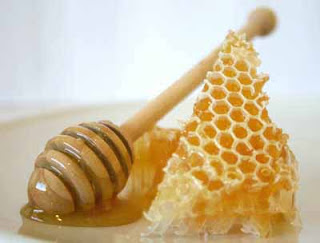
RESULTS: Significant differences in symptom improvement were detected between treatment groups, with honey consistently scoring the best and no treatment scoring the worst. In paired comparisons, honey was significantly superior to no treatment for cough frequency and the combined score, but DM was not better than no treatment for any outcome. Comparison of honey with DM revealed no significant differences.
CONCLUSIONS: In a comparison of honey, DM, and no treatment, parents rated honey most favorably for symptomatic relief of their child’s nocturnal cough and sleep difficulty due to upper respiratory tract infection. Honey may be a preferable treatment for the cough and sleep difficulty associated with childhood upper respiratory tract infection.
SOURCE: http://www.ncbi.nlm.nih.gov/pubmed/18056558?ordinalpos=2&itool=EntrezSystem2.PEntrez.Pubmed.Pubmed_ResultsPanel.Pubmed_RVDocSum
Articles About
Healing Properties of Honey
American Apitherapy Society – A non-profit membership organization devoted to advancing the investigation and promoting the use of honey bee products to further good health and to treat a variety of conditions and diseases.
http://www.honeyo.com/honeyhealing.shtml
Advantages of Eating Honey, Health Benefits Of Honey,
Increases Antioxidant Level
Eating honey leads to increase in the antioxidant levels, which are helpful in protecting cell damages caused by free radicals. The ability of the honey to increase the antioxidant level can be determined by the color itself—darker the honey, higher will be the antioxidant levels.
Healing Powers
Honey has strong healing powers. For example, it can heal wounds and is also helpful in case of stomach aches and dehydration. Honey can also be used to cure ulcers—stomach ulcers, in particular. Honey can also cure certain allergies! Yes, it is true that honey can help a person suffering from allergy. The honey from the local area of the sufferer, in particular, can give best results. Above all, it does not contain any chemicals or harmful ingredients which are present in other medicines, and therefore, is free from side-effects.
Provides several vitamins and minerals
Honey contains many vitamins such as B1, B2, C, B6, B5, and B3 along with several minerals including calcium, iron, magnesium, phosphate, potassium, sodium chlorine, and sulfur. It also contains copper, iodine, zinc, and several kinds of hormones. All these are required by human body in some quantity.
HONEY, a most assimilable carbohydrate compound, is a singularly acceptable, practical and most effective aliment to generate heat, create and replace energy, and furthermore, to form certain tissues. Honey, besides, supplies the organism with substances for the formation of enzymes and other biological ferments to promote oxidation. It has distinct germicidal properties and in this respect greatly differs from milk which is an exceptionally good breeding-ground for bacteria. Honey is a most valuable food, which today is not sufficiently appreciated. Its frequent if not daily use is vitally important.
The universal and natural craving for sweets of some kind proves best that there is a true need for them in the human system. Children, who expend lots of energy, have a real “passion” for sweets. This is really instinct. Proteins will replace and build tissues but it is the function and assignment of carbohydrates to create and replace heat and energy, and to provide what we call Honey, which contains two invert sugars, levulose and dextrose, has many advantages as a food substance. While cane-sugar and starches, as already intimated, must undergo during digestion a process of inversion which changes them into grape and fruit-sugars, in honey this is already accomplished because it has been predigested by the bees, inverted and concentrated. This saves the stomach additional labor. For a healthy human body, which is capable of digesting sugar, the actuality that honey is an already predigested sugar has less importance, but in a case of weak digestion, especially in those who lack invertase and amylase and depend on monosaccarides, it is a different matter and deserves consideration.
The consummation of this predigestive act is accomplished by the enzymes invertase, amylase and catalase, which are produced by the worker bee in such large quantities that they can be found in every part of their bodies. However, there is plenty of it left in honey for our benefit. The remarkable convertive power of these enzymes can be pif oven by a simple experiment. If we add one or two tablespoonful of raw honey to a pint of concentrated solution of sucrose, the mixture will soon be changed into invert sugar. The addition of boiled honey, in which the enzymes have been destroyed, will not accomplish such a change.
The frequent Biblical references to milk and honey demonstrate the importance of these two oldest aliments. Neither, how-ever, is a complet food nor a proper nutriment alone for a long period of time. They are effective only to supplement deficiencies of other food substances.
Milk has many drawbacks. As mentioned, it is an excellent breeding medium for bacteria. The inhabitants of the East quickly sour the milk of cows, goats, sheep, mares and camels and prepare curds and cheese from it, because in warm climates milk cannot be preserved otherwise. Honey, on the other hand, requires little attention and does not deteriorate even in the tropics. Honey has often been given reference over milk. It is not surprising that Van Helmont gave milk the epithet, “brute’s food” and suggested bread, boiled in ber and honey, as a substitute. Liebig also recommended a substitute for milk. Honey has many advantages as a staple article of diet to secure optimum nutrition.
http://www.thehealthtime.com/food-and-diet/honey.html
The Delicious Benefits of Honey
“Honey’s unique composition makes it an effective antimicrobial agent, useful for treating minor burns and scrapes, and for aiding the treatment of sore throats and other bacterial infections. Of recent interest is the antioxidant content of honey. Honey contains a variety of flavonoids and phenolic acids which act as antioxidants, scavenging and eliminating free radicals. Generally, darker honeys have higher antioxidant content than lighter honeys. Honey is composed primarily of carbohydrates and water, and also contains small amounts of a wide array of vitamins and minerals, including niacin, riboflavin, pantothenic acid, calcium, copper, iron, magnesium, manganese, phosphorus, potassium and zinc.
http://blog.grasslandbeef.com/bid/17679/The-Delicious-Benefits-of-Honey
CINNAMON & HONEY CURES
The magic mixture of honey and cinnamon is known for hundreds of years for their miraculous curing power. If we look back into the history we can see both these items used by different countries and cultures across the world for different medicinal purposes.
SOURCE: http://healthmad.com/alternative/10-miraculous-health-benefits-of-honey-and-cinnamon-combo/#ixzz104lv5nHd
Q. What is the only food that doesn’t spoil?
A. Honey
CINNAMON
Cinnamon Healing Power and Curative Properties
Cinnamon leaves are used in the form of powder or decoction. They are stimulant and useful in relieving flatulence and in increasing secretion and discharge of urine. Cinnamon prevents nervous tension, improves complexion and memory. A pinch of cinnamon powder mixed with honey does the trick if taken regularly every night for these purposes.
Common Cold
Cinnamon is an effective remedy for common cold. Coarsely powdered and boiled in a glass of water with a pinch of pepper powder and honey, it can be beneficially used as medicine in cases of influenza, sore throat, and malaria. Its regular use during the rainy season prevents attacks of influenza. Cinnamon oil, mixed with honey, gives relief from cold.
Digestive Disorders
Cinnamon checks nausea, vomiting and diarrhea. It stimulates digestion. A tablespoon of cinnamon water, prepared as for cold and taken half an hour after meals, relieves flatulence and indigestion.
Bad breath
Cinnamon serves as a good mouth freshener.
Headache
Headache produced by exposure to cold air is readily cured by applying a paste of finely powdered cinnamon mixed in water on the temples and forehead.
Acne
Paste of cinnamon powder prepared with a few drops of fresh lime juice can be applied over pimples and blackheads with beneficial results.
Other Diseases
Cinnamon is highly beneficial in the treatment of several other ailments, including spasmodic afflictions, asthma, paralysis, excessive menstruation, uterus disorders and gonorrhea. It is sometimes used as a prophylactic agent, to control German measles.
Other Uses
Natural Birth-Control: Cinnamon can be used for natural birth-control. It has the remarkable effect of checking the early release of ova after child-birth. A piece of cinnamon taken every night for a month after child-birth delays menstruation for more than 15 to 20 months thus preventing early conception. It indirectly helps the secretion of breast milk. Prolonged breast feeding checks the restarting of menstruation after child-birth, according to studies.
Dried cinnamon leaves and inner bark are used for flavoring cakes and sweets and in curry powder. They are also used in incense, dentifrices and perfumes. Cinnamon bark oil is used for flavoring confectionery and liqueurs. It is also used in pharmaceutical and dental preparations. Cinnamon leaf oil is used in perfumes and flavorings as also in the synthesis of vanillin.
http://www.asianonlinerecipes.com/herbs-health/cinnamon-healing-properties.php
HEALTH BENEFITS OF CINNAMON
In the ancient world, cinnamon was more precious than gold and was regarded as a gift fit for monarchs. In fact, Pliny the Elder in the first century AD valued cinnamon at 15 times the value of silver. Nero, emperor of Rome in the first century AD, burned 12 months supply of cinnamon at the funeral of his wife – an extravagant gesture to signify the depth of his loss.
Cinnamon has been used since ancient times both as a culinary spice and for medicinal and other purposes. The ancient Egyptians included cinnamon in their embalming mixture. Moses combined cinnamon, cassia, and other spices with olive oil to anoint the Tabernacle and its furnishings.
During the Middle Ages, the Arabs carried cinnamon and other spices along the old caravan trade routes to Alexandria, Egypt. From there it was shipped to Europe. The Arabs constructed many exotic stories about the great difficulty of harvesting cinnamon to account for its scarcity and justify the high price of the spice.
Origins
The name cinnamon is derived from a Greek word meaning sweet wood. It is derived from the inner bark of the cinnamon tree, an evergreen tree of the Laurel family. The rolled bark is allowed to dry, forming a scroll or quill. The quills are cut into 2 to 3 inch sticks or ground into powder. The ground cinnamon has a stronger flavor than the sticks, and can stay fresh for 6 months while the scrolls last longer. Both should be stored in a cool, dark, and dry place.
There are two main varieties of Cinnamon- Cinnamomum verum (True or Ceylon cinnamon) grown in Sri Lanka, and southern India; and Cinnamomum aromaticum (also called Cassia), which is grown in China, Indonesia, and Vietnam. True cinnamon has a yellowish-brown color and tends to produce a finer powder than cassia which has a grayish-brown color. The cinnamon from Sri Lanka, which is preferred by the Europeans, has a milder, sweeter flavor and is more expensive. In the United States cassia is the widely used product. True cinnamon maybe adulterated with cassia.
Common Flavor
Cinnamon is used as a flavoring agent in soft drinks, teas, and bakery products such as cereals, granola bars, puddings, pastries, cakes, pies, and donuts. Cinnamon is often added to oatmeal, toast, candy, hot chocolate, tea or coffee, and in chewing gums. Cinnamon is also a common ingredient in many Indian curries. It is also an ingredient in many medicinal formulas to improve the taste and aroma of the medicine. In addition, cinnamon is used in the perfumery industry.
Medicinal Uses
The medical properties of cinnamon were utilized by ancient health practitioners such as Dioscorides and Galen in their various treatments. In medieval times, cinnamon was an ingredient of medicines for sore throats and coughs. Cinnamon has been used to alleviate indigestion, stomach cramps, intestinal spasms, nausea, and flatulence, and to improve the appetite, and treat diarrhea.
A number of additional medicinal properties have been reported for cinnamon. In folk medicine it was used for treating rheumatism and other inflammations. Its mild anti-inflammatory, anti-spasmodic, and anti-clotting properties are believed to be due to its content of cinnamaldehyde. Cinnamon extracts are active against Candida albicans, the fungus responsible for vaginal yeast infection, and also Helicobacter pylori, the bacterium responsible for stomach ulcers. The antimicrobial properties of cinnamon are thought to be due to eugenol and a derivative of cinnamaldehyde.
Cinnamon extracts have also inhibited the growth of cultured tumor cells. This effect may be due to the presence of procyanidins and eugenol in the bark extract. Cinnamon is also useful as a food preservative to inhibit the growth of common food-borne bacteria such as Salmonella and E coli.
Blood Sugar Levels Modified
Cinnamon has been used in Korea and China as a traditional herb for treating people with diabetes. While researchers were investigating the effect of various foods on blood sugar levels, they found that apple pie did not produce the expected rise in blood sugar levels They discovered that the cinnamon content of the pie was protective.
Cinnamon contains some water-soluble polyphenolic polymers derived from the antioxidant catechins. These compounds increase insulin sensitivity by enhancing insulin receptor function and increase glucose uptake. A study involving 60 men and women, average age 52 years, who had type 2 diabetes, were given ½ teaspoon a day of cinnamon for 6 weeks. They showed a 25 percent decrease in fasting blood glucose levels as well as a 12 percent drop in blood cholesterol levels and a 30 percent drop in blood triglyceride levels.
Higher dosage levels produced more rapid improvements but the larger amounts did not improve the overall effectiveness over time. In another trial, 22 adults with prediabetes were given 500 mg of a water-soluble cinnamon extract daily for 12 weeks. Without any changes in diet or physical activity, the majority of people experienced about a 10 percent drop in fasting blood sugar, without blood lipid changes. Different cinnamon species may give different results. Cinnamon is also a good source of chromium, an essential trace mineral that augments the action of insulin.
http://www.vegetarian-nutrition.info/herbs/cinnamon.php
THE BARK THAT HEALS
Cinnamon is one of the world’s oldest spices; the tree is native to Srilanka where it was found six thousand years ago. Cinnamon was known to ancient physicians even before 2700 BC. Cinnamon, it appears to have reached Egypt and Europe by the fifth century BC. This tree occurs in south India, from 200 to 500 meter altitudes. The Chinese used the bark of this tree as a medicine. The Romans also knew about the medicinal value of this bark. Eminent physicians like Galen, discords and sassafras described various uses of cinnamon, Indians knew about the therapeutic uses of this herb before the eighth century. The oldest record available about the description of cinnamon is in the “torah”, the Jewish religious text. It was, however, Khizvenee, who was the first person to give details about the medicinal virtues othis in the 13th century. Dried leaves of this evergreen tree, along with its inner bark are used as a spice or condiment. It has a pleasing fragrance and a warm, sweet and aromatic taste.
http://healersocean.ning.com/profiles/blogs/curative-properties-of-the?xg_source=activity
CINNAMON MEDICINAL PROPERTIES
http://www.home-remedies-guide.com/herbs/cinnamon.htm


